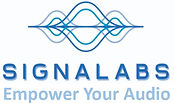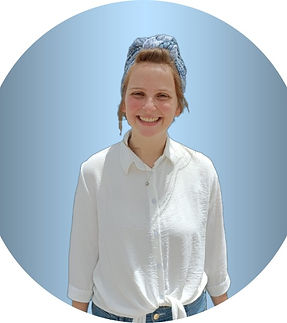
Our Team

Our People
Let us introduce you some of our people & their jobs
Shira Zioni, pitch estimation
Hello Shira! Tell us, what your team is working on?
We are working on finding the resonance frequency of the human voice from a wav file. For biological reasons, the human voice is harmonic, so the dominant frequency can be extracted for each specific time window.
How are you doing this?
There are three main methods for identifying the resonance frequency - finding in the time domain, in the frequency domain, and in the cepstrum domain. The main advantage of the method in terms of time is the relatively fast calculation time that allows for real-time application.
Our method uses autocorrelation.
What is autocorrelation: In autocorrelation, we check the correlation (matching) of a signal with a shifted copy of itself. One of the uses of autocorrelation is the invention of a periodic signal within the signal rule. We will use the properties of the autocorrelation to find the resonant frequency.
Formally, the method is called Auto Correlation Function, or ACF.
What challenges were there during the work?
The first challenge was to find the appropriate method. We wanted to choose a method that would be suitable for real time (at least in theory) and would be accurate. Also, after choosing the method, there was a challenge around how to cut the signal correctly, and how to be precise in finding the frequency without harming too much the performance time or the causality.
What did you learn while working on the project?
First, I learned about teamwork. Our code was improved thanks to the integration and performance research team, who helped us refine the code to fit with the rest of the system. Also, I learned personal responsibility. At work, Naama and I had to finish the codes very early to allow performance research and integration time to work. Also, we made sure to help back these teams and the research by documenting what we did.
Noam Frei, Manager
Hello Noam Frei, the manager and founder of SignaLabs. Tell me, How was the idea of the company born?
The idea for SignaLabs was born out of a conversation with Ofer and Ze'ev, who were facing significant challenges in their respective fields. They approached me with the concept of creating a company that could specifically address these difficulties. Inspired by their vision and the clear need for innovative solutions, I founded SignaLabs. Our mission became to not only solve their problems but also to provide cutting-edge solutions for others facing similar challenges. This collaborative and purpose-driven approach continues to be at the heart of SignaLabs today.
How did you choose the company's teams members?
When selecting members for the team at SignaLabs, I focused on two key criteria. Firstly, I sought individuals who excelled in their field and had a track record of high academic and professional achievements. Their expertise and dedication are crucial for driving our innovative projects forward. Secondly, I prioritized those who had served in the military. Recognizing the challenges they often face in transitioning to civilian careers, I wanted to provide them with opportunities where their skills and experiences could be valued and utilized effectively. This combination of exceptional talent and a commitment to supporting veterans has been instrumental in building a strong, dynamic team at SignaLabs.
Which challenges did you face with during the work?
In my journey with SignaLabs, I encountered several significant challenges. Firstly, understanding the theoretical concepts behind the problems we aimed to solve was a major hurdle. It required deep dives into complex subjects to ensure we had a solid foundation for our solutions.
Secondly, we had to use Python in ways we had never done before. This involved exploring advanced techniques and pushing the boundaries of our existing knowledge to develop innovative solutions.
Lastly, collaborating effectively with all the teams was a crucial challenge. Ensuring smooth communication and synergy among diverse groups required continuous effort and strategic coordination. Overcoming these challenges has been instrumental in driving our success at SignaLabs.
How do you think that SignaLabs will affect the audio world?
SignaLabs is set to revolutionize the audio world in two key ways. Firstly, our solutions will provide advanced analysis capabilities, allowing for more precise and insightful understanding of audio data. This will enable professionals to make more informed decisions and uncover new possibilities in their work. Secondly, we are dedicated to enhancing the quality of audio. Our innovative technologies and approaches will ensure superior sound experiences, whether in music production, broadcasting, or other audio applications. By addressing these critical aspects, SignaLabs will significantly elevate the standards and possibilities in the audio industry.
What is your vision for the future?
My vision for SignaLabs is to integrate advanced AI technologies to further improve audio quality. By leveraging AI, we aim to push the boundaries of what's possible, delivering unparalleled audio experiences. Additionally, I am incredibly proud of our great team, comprised of highly skilled and dedicated individuals. I look forward to collaborating with them on a variety of exciting tasks and projects, driving innovation and excellence in everything we do. Together, we will continue to shape the future of the audio industry.
.png)
.png)
.png)

.png)
.png)
.jpeg)
.png)
.png)
.png)
.jpeg)
.png)
.png)
.png)


.png)
.jpeg)
.png)


.jpeg)
.jpeg)
.png)
.jpeg)

.png)
.png)

.jpeg)
.jpeg)
.png)
.jpeg)

.jpeg)
.png)
.jpeg)
.jpeg)

.png)
.png)
.jpeg)

.png)